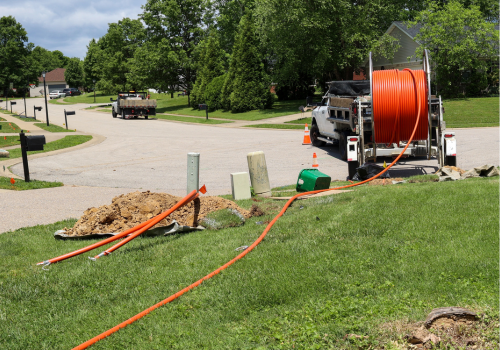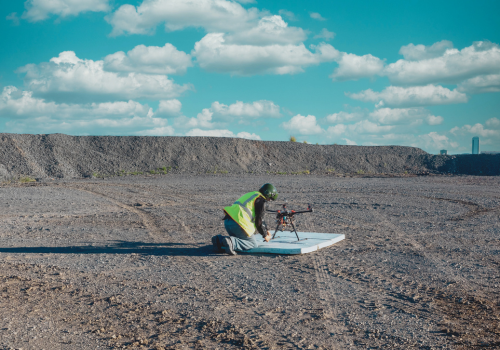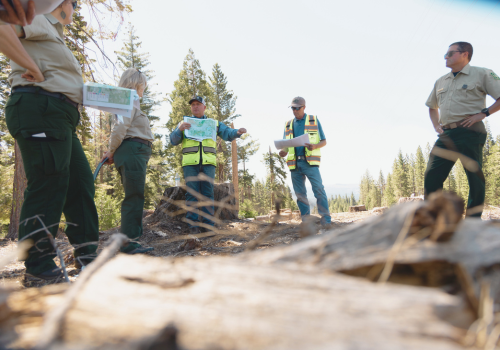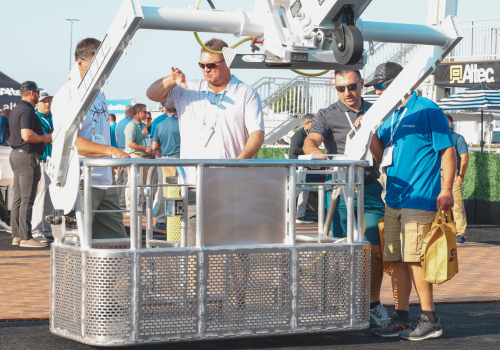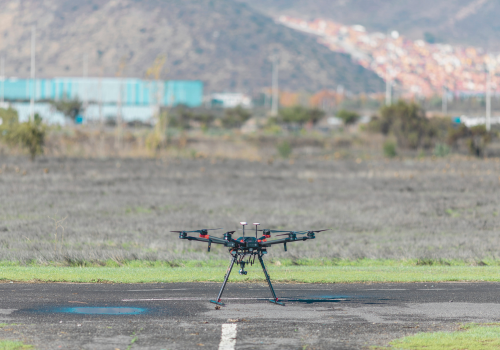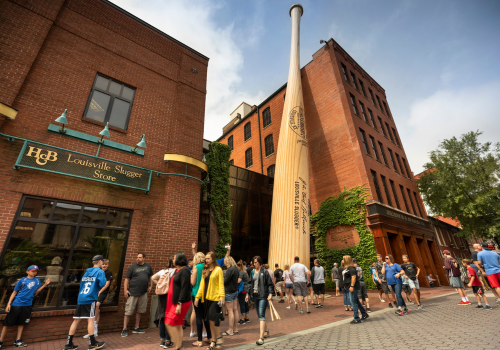When it comes to pipelines, the average person just flushes the toilet or drains the dishwater from their sink at home and doesn’t think twice.
“The water just goes away and no one really pays attention to what happens after that,” points out Bryan Franklin, vice president of Robinson Pipe Cleaning Co. based in the Louisville, Ky. office.
What seem like ordinary actions are possible and essentially seamless because of an important part of pipeline rehabilitation – lining lateral pipes.
Lateral lines, the sections of a pipeline that branch off of the main or transmission line of a home that carry wastewater from toilets, sinks, laundry, drains, etc. to the main sewer pipeline, are essential to a pipeline system’s integrity and functionality.
It’s only within the past decade – and really within the last five years – that rehabbing lateral pipelines has become mainstream as technology has advanced, Franklin says. Prior to this, he says, the industry simply focused on rehabbing mainline pipelines because there was a lack of technology for lateral lining systems. Now, the need to and how to perform lateral pipe repairs has become much more apparent.
“We’ve known that if there is an issue if you block water in one place, it will find its way to the next open spot,” he says. “Even if we stop all the water coming in and out of the main pipeline, it can start coming in on the laterals.”
Stopping Infiltration
Infiltration is driving the overall pipeline rehabilitation business not only to extend the life of the assets but also because it impacts the environment in a negative manner, says Dennis Sullivan, P.E., the executive vice president of Canton, Mass.-based National Water Main Cleaning Co.
“It’s a pollution issue,” he explains. “Infiltration takes up capacity in a sanitary system and causes overflows.”
During rain events, infiltration causes lines to either have sanitary overflow or it overflows into nearby bodies of water. Using the line, “All drains lead to the ocean,” from the animated movie, “Finding Nemo,” to explain, Sullivan says, “All pipes lead to some body of water.”
Since the formation of the “Clean Water Act” in the early 1970s, the U.S. Environmental Protection Agency (EPA) has held the owners of pipes accountable after samples are taken and can levy a hefty fine against them.
“It seems counterintuitive,” Sullivan points out. “How can rainwater cause these problems? Wastewater treatment plants are designed to take a certain volume of flow, but if they become over capacitated, mechanisms can release dirty water and raw sewage. Lining a pipeline solves the pollution issue by making the system watertight.”
In addition to waterproofing the underground pipeline system, lining pipelines also extends their life cycle by about 50 years by providing a structural fix without having to dig and solving environmental issues at the same time, Sullivan says. “Improving the environment is a legacy you can leave to your children,” he adds.
The “old industry” 10 years ago thought that lining mainline pipe in the street would solve the infiltration issue. “Now we know there are more components,” Sullivan says. “Best practices now include lining the manholes, laterals and the mainline pipe to the street.”
The more progressive engineering firms are looking at rehabilitation as multifaceted and developing comprehensive design packages to address all the pipeline elements. The lowest elevation point typically has the most infiltration. Installing flow meters to pinpoint these areas in a town or municipality, enables engineers to develop a plan to waterproof all these areas and stop infiltration.
“Cities and towns that find these low points and address them over a course of time start to see the impact,” Sullivan says. “Their bacteria counts are lower and beaches aren’t shut down as much.”
Protecting our Pipelines
Pipeline transportation is one of the safest and most cost-effective ways to transport natural gas and hazardous liquid products, according to the U.S. Department of Transportation’s (DOT) Pipeline and Hazardous Materials Safety Administration.
As the United States continues to develop and place more demands on energy transportation, “it becomes necessary to invest in upgrading its infrastructure, including aging pipelines,” the agency notes.
What’s more is that as pipeline infrastructure continues to age, it’s increasingly important to prioritize rehabilitation of the nation’s wastewater treatment collection and pipeline systems.
“Cracks, settling, tree root intrusion, and other disturbances that develop over time deteriorate pipelines and other conveyance structures that comprise wastewater collection systems,” notes the U.S. Environmental Protection Agency (EPA) Office of Water. “These deteriorating conditions can increase the amount of inflow and infiltration entering the system, especially during periods of wet weather.”
Increased inflow and infiltration (I/I) levels, combined with stormwater entering the wastewater collection system through downspouts and sump pumps, can create an added hydraulic load on the system, which decreases its overall capacity. It may also push a wastewater treatment plant past its capacity, which may cause untreated wastewater to be released into the receiving water.
This is why trenchless technology is such an important part of pipeline rehabilitation. Traditional sewer relief methods call for replacement or additional parallel sewer lines constructed by digging along the entire length of the existing pipeline to unearth and replace the deficient pipe (the dig-and-replace method).
However, trenchless methods for pipeline rehabilitation use the existing pipe as a host for a new pipe or liner.
“Trenchless sewer rehabilitation techniques offer a method of correcting pipe deficiencies that requires less restoration and causes less disturbance and environmental degradation than the traditional dig-and-replace method,” the agency points out. “The less the amount of excavation required for a rehabilitation operation, the more cost-effective trenchless sewer rehabilitation becomes as compared with the traditional dig-and-replace method.
 Understanding Pipeline Technologies
Understanding Pipeline Technologies
The most common– and most cost-effective – pipeline rehabilitation method is cured-in-place pipe (CIPP), a trenchless (no dig) rehabilitation process used to repair existing pipelines. CIPP uses a jointless, seamless pipe lining within an existing pipe.
“If a city is working on a limited budget, the traditional steam-cured CIPP method will give you the most bang for your buck,” Sullivan says. “You can line the most pipes for the cost.”
UV cured-in-place pipe lining can also be used but is very site specific for an application such as a drain pipe that is difficult to access. Traditional steam-cured CIPP requires a truck to be close to a manhole. With UV cured-in-place lining, the equipment does not have to be as close so there is more flexibility. UV lining approach may also prevent costly excavations on larger diameter pipe applications.
Compared to steam-cured CIPP liners, UV liners also have much higher physical properties – about five times the physical strength, Sullivan points out. In the case of a Buffalo, N.Y. area project performed by Sullivan’s company, this pipeline rehabilitation benefited from the extra strength.
Piers supported an elevated sewer line through an easement wetland area. An interceptor was elevated for about 20 feet, raising concern about one of the piers getting washed out.
“We wanted the pipe to act like a bridge and support itself so we looked at UV lining as the solution,” Sullivan says. “You can really size a UV liner to act like a steel beam because it has five times the physical strength as a steam-cured liner. Although CIPP is the dominant method, UV liners have important applications.”
The spincast, a.k.a. centrifugal cast in place, method plays an important role in the rehabilitation of odd-shaped or extra-large pipes.
“We mix/batch fiberglass reinforced cement on the ground, pump it through an inch and a half and a half hose and spin in ½-inch increments,” Sullivan says. “It’s almost like forming concrete pipes within the existing pipes. With the advancement in pipes, cements and products being used for various applications, you are really developing a portfolio of trenchless methods to be used with different resources.”
National Water Main Cleaning Co. used the method for an East Coast project. The city where the project was being done had old brick sewers more than 50 feet deep that had been installed at the turn of the century and wanted to protect them before a major highway construction – tearing down overpasses – commenced.
“We were able to temporarily bypass the flow and spincast the odd-shaped pipes,” Sullivan points out. “It may have cost tens of millions of dollars to replace them. By rehabbing them, we were able to extend the life of the infrastructure for another 100-plus years.”
The fold-in-formed process is also used in pipeline rehabilitation, but it is used very infrequently and not very cost competitive, Sullivan explains. It has applications for drainpipes and drain line systems where it’s hard to get equipment in place for the installation.
“You can drag it in place instead of inverting it – and not as much equipment is needed,” he points out. “You can also do a one-shot installation in hard-to-reach places.”
 Using Multiple Pipeline Rehabilitation Methods in Tandem
Using Multiple Pipeline Rehabilitation Methods in Tandem
Chemical grouting also has a place in pipeline rehabilitation as a low-cost alternative to help combat infiltration. For about one-fifth of the price of steam-cured CIPP, chemical grouting can be used on sanitary sewers.
“The grouting approach, though, is a non-structural temporary fix not a permanent solution,” Sullivan explains. “It has a specific time duration. You’re solving infiltration – simply stopping a leak – but not extending the life of infrastructure like CIPP, which is a structural repair.”
That being said, Sullivan notes that it’s still an important method to have in the tool chest. In some conditions, grouting may need to be done prior to installing a liner because it is so effective at stopping infiltration.
“As CIPP lining has evolved, it is taking the market share of grouting over time, but it doesn’t mean it will completely replace it,” he says. “You need it to help facilitate your process. Sometimes, you use them in tandem.”
Geography and time of year come into play. In areas of the country such as Texas or Arizona, there aren’t usually infiltration problems so grouting would not need to be done prior to inserting a main line or lateral liner, Sullivan explains.
“If you are trying to install a liner in early spring or winter when the pipeline system is getting a lot of water or are along a coastline, you have to stop infiltration before you insert the liner,” he adds.
Pipe bursting, also referred to as in-line expansion, is a process where a bursting head is inserted into an existing pipe to crush it and pull the new pipe in place behind it. Like chemical grouting, this method isn’t regularly used but is important and often used in tandem with other techniques.
“If you have a particular pipe that can’t be lined or don’t want to dig it but want to replace it, this is an important process you can use in very specific cases,” Sullivan says. “This is why it’s so important to use a comprehensive approach to pipeline rehabilitation and incorporate many different technologies into one contract.”
The Future with Robotics and Resins
A newer design approach to line manholes, mainline and laterals pipes is the progressive approach that the industry needs to be educated about.
“Addressing the laterals and manholes in conjunction with mainline lining is like putting flashing around the window or roof to keep it from leaking,” Sullivan says. “All elements need to be sealed in order to make your wastewater collection system watertight. It’s the most effective way to eliminate pollution in your environment.”
The use of carbon fiber material is also beginning to make its way into the trenchless market. “In the future, the industry will also see the expanding use of photo-activated resins in mainline and lateral lining, he says. “This method involves impregnating a liner material with a polyester or vinyl ester resin that is activated by the light of a certain wavelength to cure and harden the resin.”
Photos courtesy of National Water Main Cleaning Co.
See the latest equipment and technologies for pipeline construction and rehabilitation at The Utility Expo, September 28-30, 2021 in Louisville, KY. For the latest show news and information, sign up for show alerts.
Join thousands of industry peers who receive utility construction industry news and trends each week. Subscribe to The Utility Expo Newsletter.


